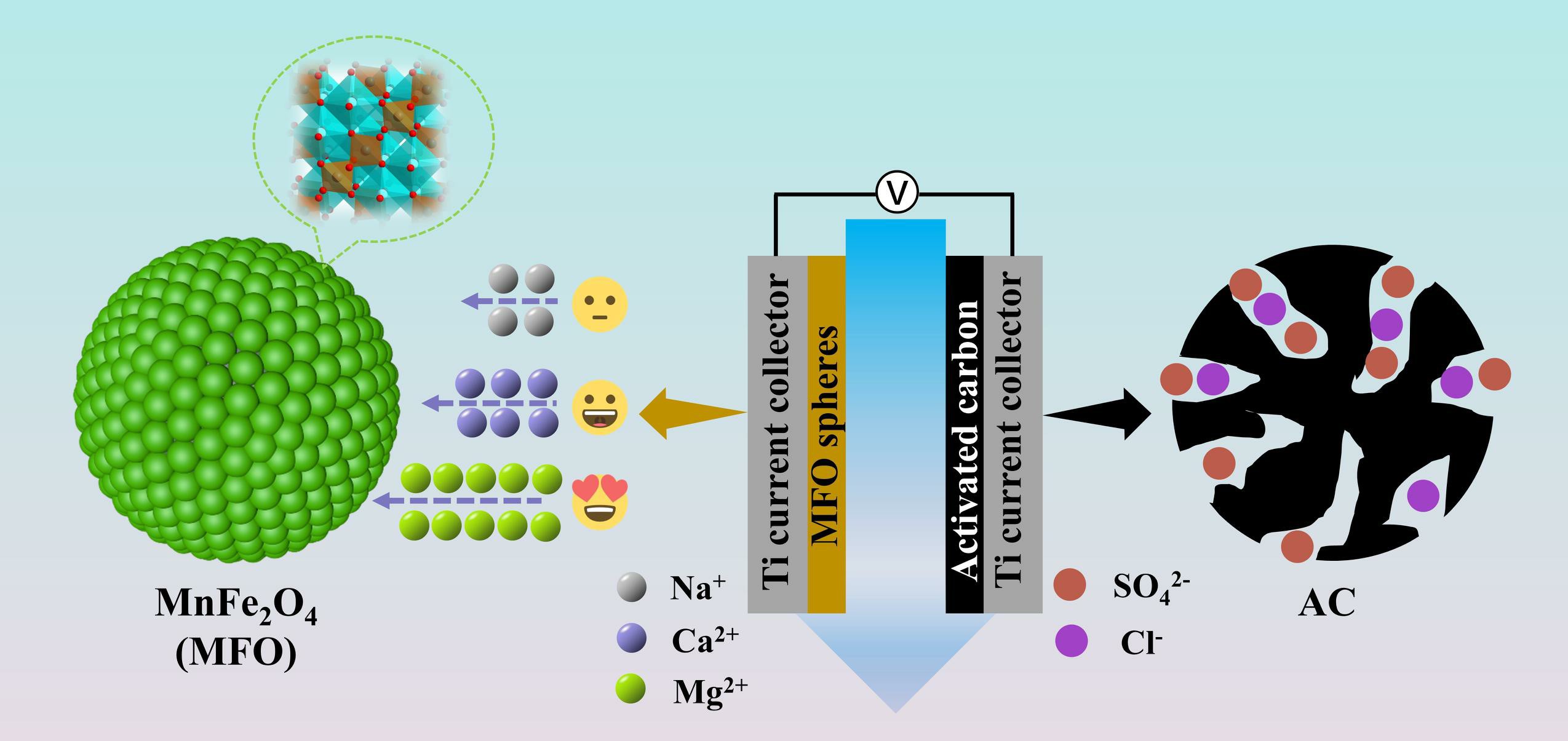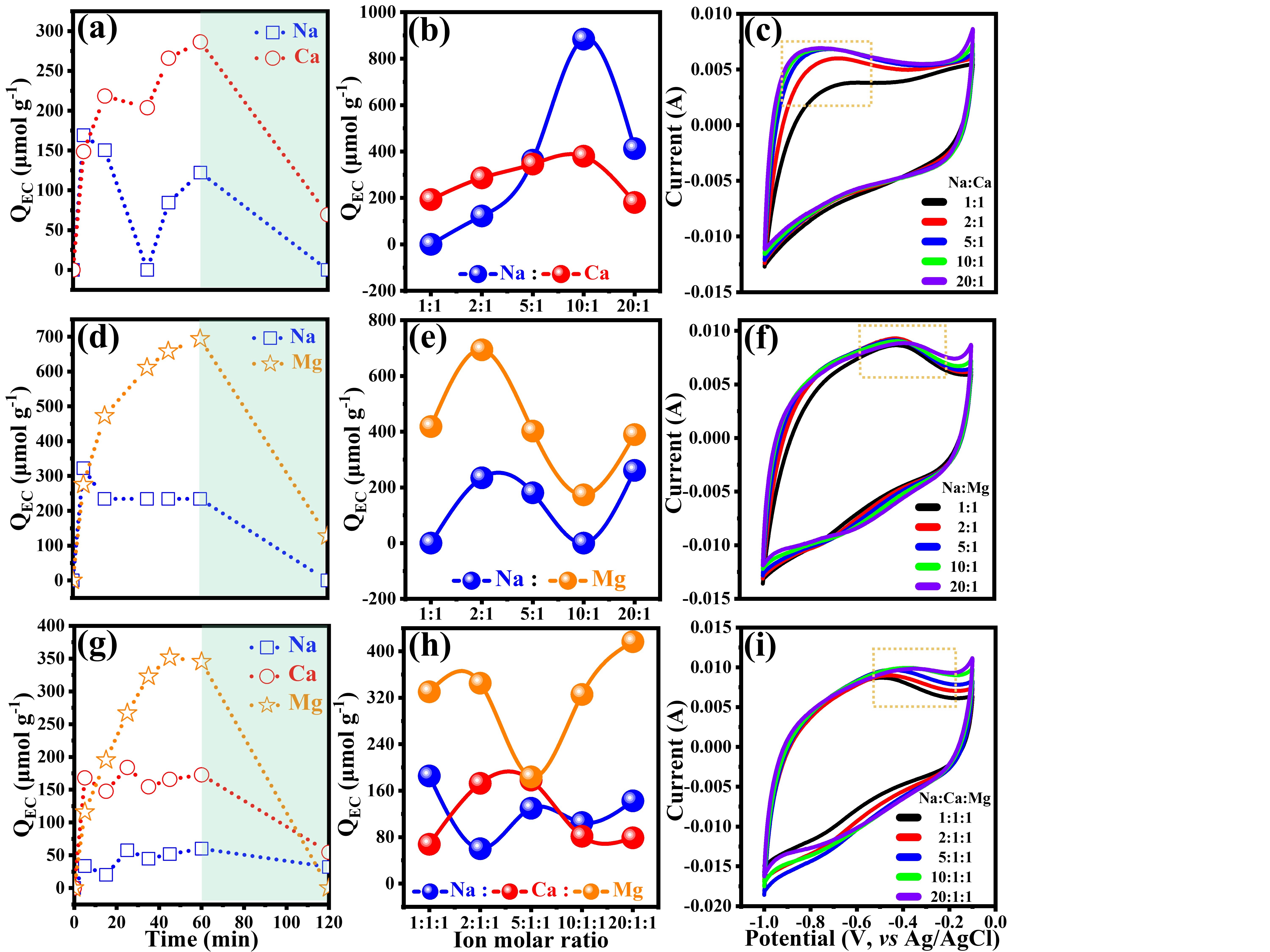
Over 85% of accessible freshwater is hard water, which contains calcium and magnesium ions, inducing scaling of boiler. Capacitive deionization, as a novel water treatment technology, has aroused great concern due to unique and high ion selectivity compared with traditional methods (reverse osmosis, adsorption, etc.).
Recently, researchers at the Hefei Institutes of Physical Science (HFIPS) of the Chinese Academy of Sciences (CAS) developed a pseudo-capacitive electrode with high absorption capacity, selectivity and stability for electro-sorption of hardness ions (Ca2+ and Mg2+).
They prepared manganese spinel ferrite (MFO) nanospheres as pseudocapacitive cathode to assemble hybrid capacitive deionization system with commercial activated carbon for water softening.
Then, superb electro-affinity and corresponding high hardness selectivity of hardness ions in multi-cation solution (Na+, Ca2+ and Mg2+) were found, in which cyclic voltammetry tests in multi-ion electrolyte and molecular dynamics simulations also support this experimental result.
This research work is of great significance for exploring capacitive deionization pseudo-capacitive electrode materials with high efficiency and selective electrosorption of target ions and hard water softening.

Fig. 1 Schematic diagram of selective ions electrosorption in MFO electrode of hybird capacitive deionization system. (Image by XU Yingsheng)

Fig. 2 Electrosorption measurements and corresponding cyclic voltammetry tests in multi-ion solution. (Image by XU Yingsheng)

86-10-68597521 (day)
86-10-68597289 (night)

52 Sanlihe Rd., Xicheng District,
Beijing, China (100864)

